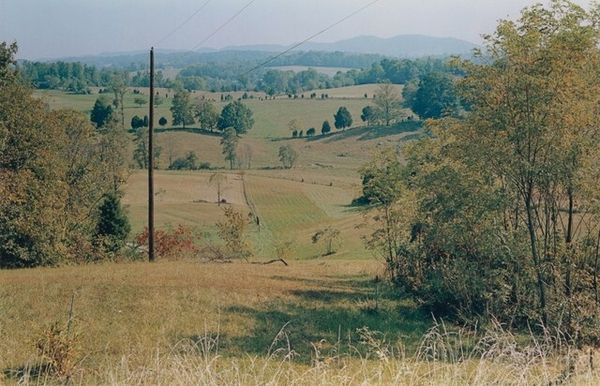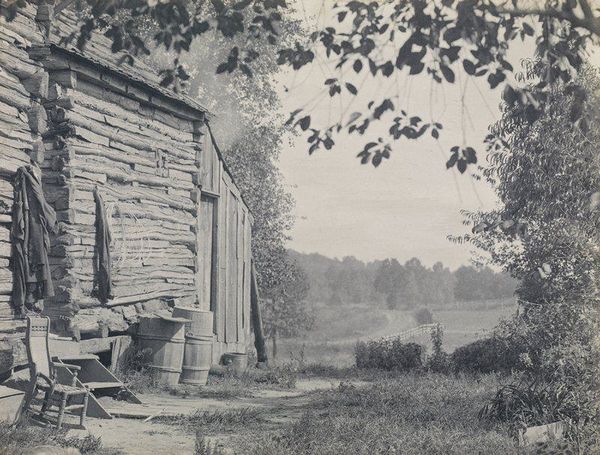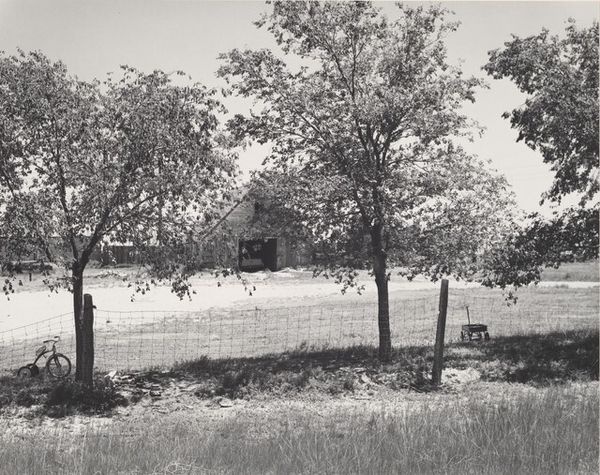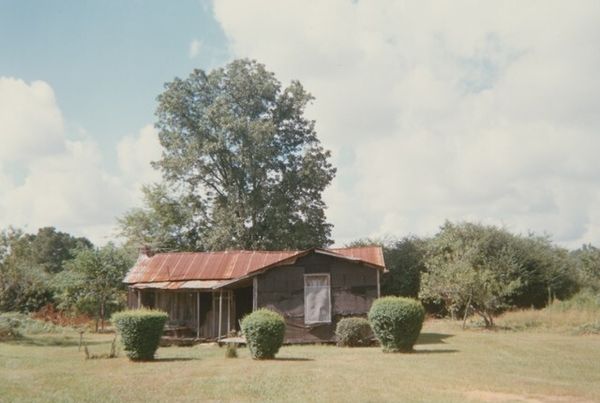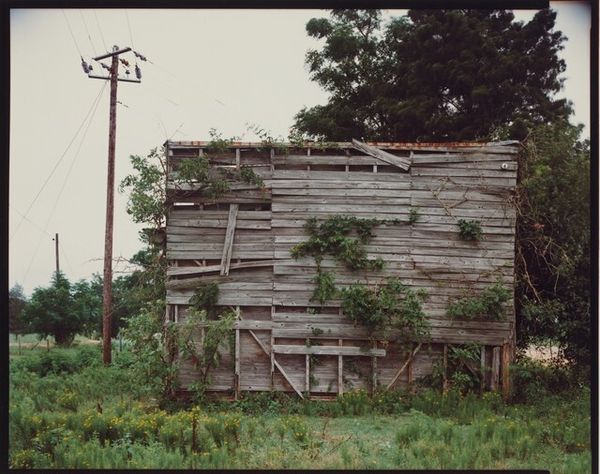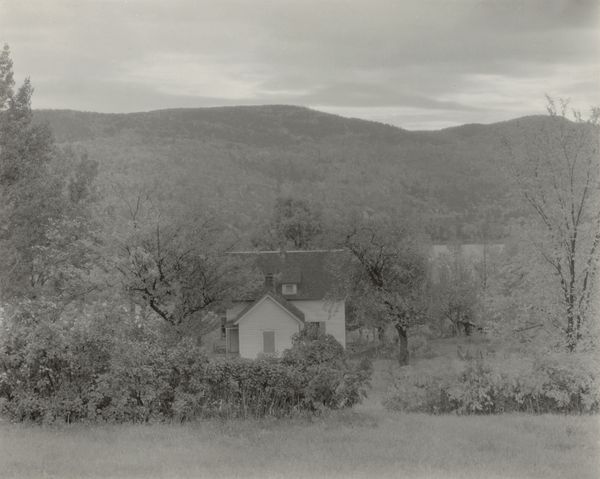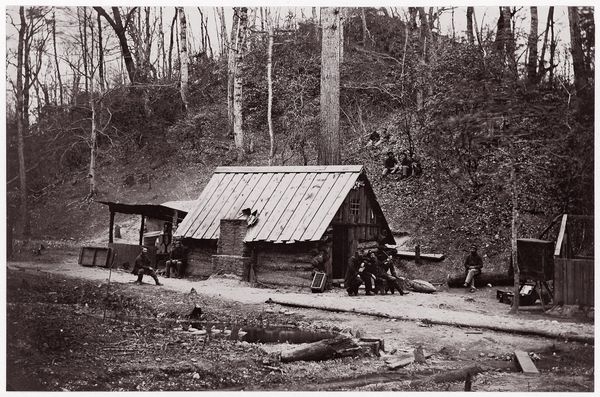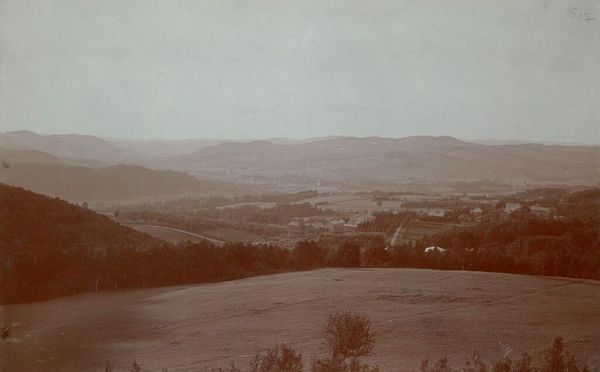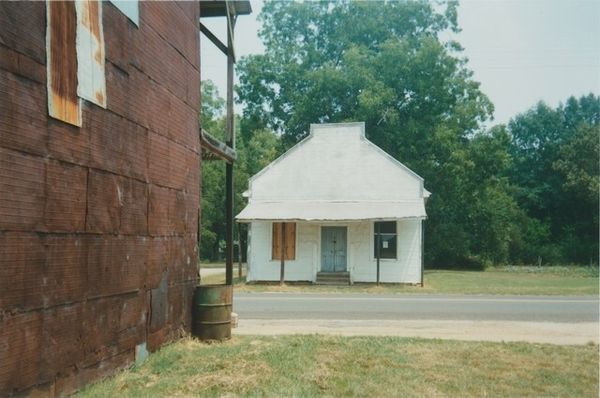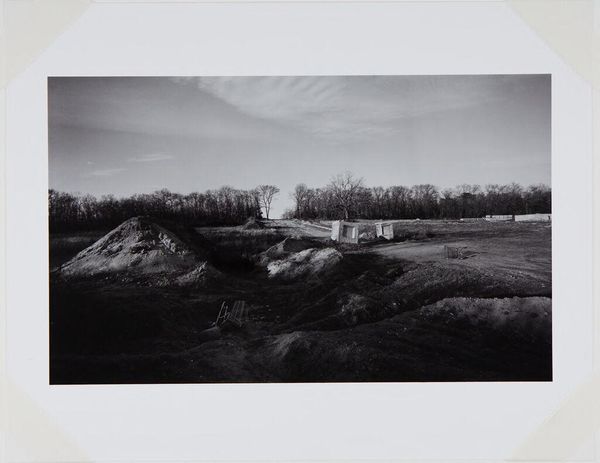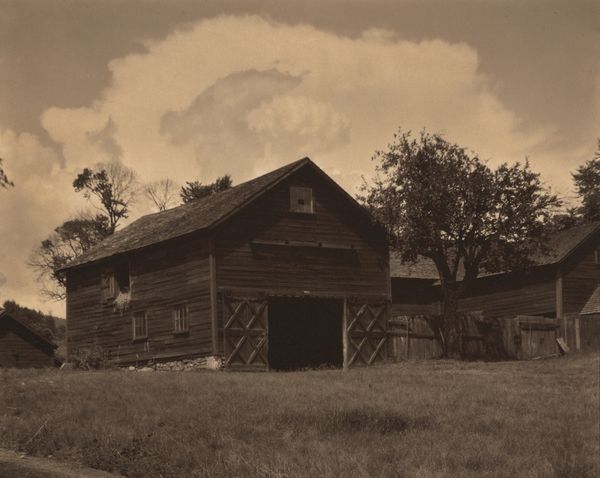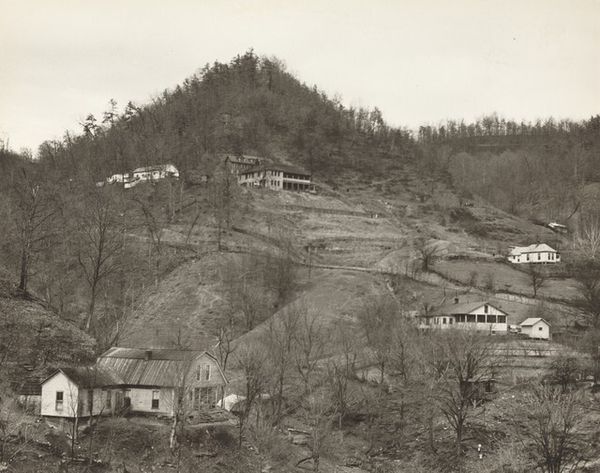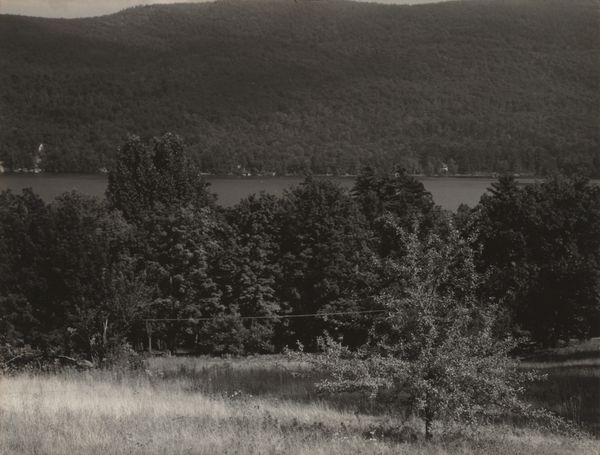
plein-air, photography
#
contemporary
#
plein-air
#
landscape
#
nature
#
outdoor photography
#
photography
#
realism
Dimensions: image: 23 × 36 cm (9 1/16 × 14 3/16 in.) sheet: 40.64 × 50.8 cm (16 × 20 in.)
Copyright: National Gallery of Art: CC0 1.0
Curator: We’re now looking at “Near Johnson City, East Tennessee,” a photograph taken by William Eggleston in 1984. Editor: There's a stillness here, almost melancholy. A lonely barn sits in the middle of the frame, nestled in a vast expanse of rolling green hills, like an artifact, a relic. Curator: Eggleston elevated color photography from commercial work into a serious art form. Notice how he captured seemingly ordinary, even banal, scenes with an almost painterly sensibility. The shadows, the light on the hillsides, the dilapidated structure... they all converge, speaking to the passage of time and memory. Editor: That decay is definitely palpable. It makes me think about rural displacement, the decline of family farms in the late 20th century, and the quiet desperation underlying the beauty of this landscape. What was once an idyllic agrarian landscape is haunted by a sense of abandonment and what has been lost through capitalist sprawl. Curator: Absolutely. It echoes the iconography of decline we see across various cultural symbols. Barns like this hold collective memories of sustenance and labor, family ties and survival, which makes the fading beauty so striking. There's a symbolic power in these architectural remains and they become visual shorthands for the rural American experience. Editor: I think there's an implication that, by photographing the seemingly unremarkable, Eggleston subtly confronted ideas of economic power and societal change that often go unseen. He holds these subjects to the same standards of aesthetic relevance of other cultural products of its time. Curator: True. We attach importance and meaning to objects—a dilapidated barn, a lone tree—and through these, to larger themes. It speaks to the continuity of human experience and the layered stories our landscapes hold. Editor: This has been a powerful reflection on what an artist captures through an everyday subject. We must not be limited by their intended scope but look at its relation to social reality. Curator: I agree completely. Images have inherent resonance; and examining Eggleston’s perspective here, helps expose so many latent histories.
Comments
No comments
Be the first to comment and join the conversation on the ultimate creative platform.
